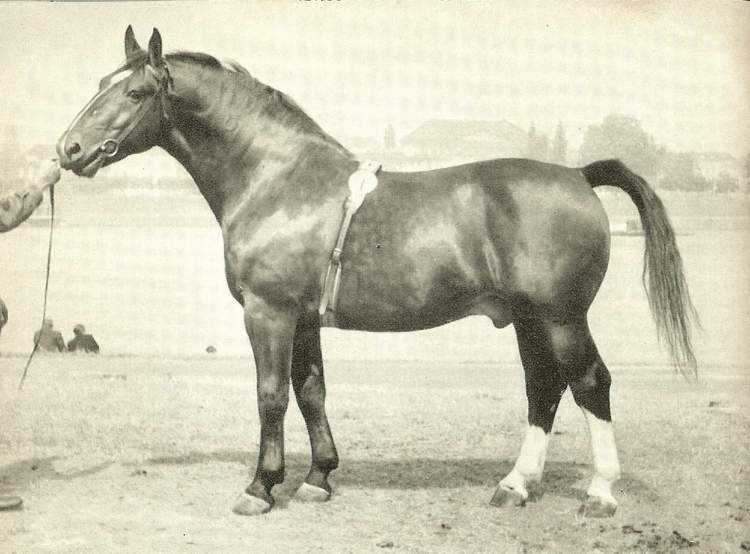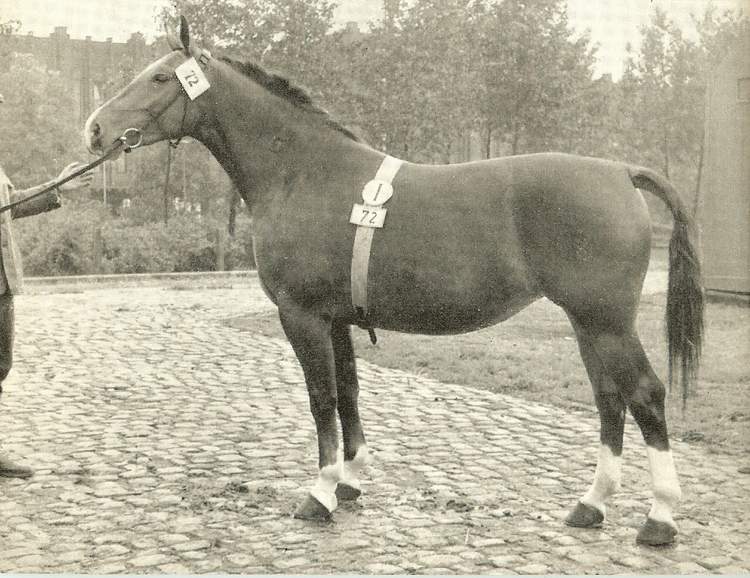

East Friesian


Introduction: If you have any comments or suggestions, please click here. The picture on the left above is of an East Friesian stallion; the one on the right is a mare.
Names: East Friesian.
Origin: Germany, East Friesland. Breeding wholly in the hands of private breeders. All East Friesians are branded and registered with the breeders' association (Ostfriesen Verband).
Breeding: The East Friesian appears to have been, originally, a heavy horse but was already being upgraded in the Middle Ages by crossing with well-bred foreign horses. In the nineteenth century, by the use of Hanoverian stallions, the breed was given its present-day speed and temperament. The Friesian Arabs bred from Arabs in recent years are, unfortunately, not generally suitable for further breeding as they usually turn out to be too light.
Description:
Action: Long-striding walk. High trotting action, covering much ground, is strong and energetic, with plenty of thrust from hind legs. The Friesian Arabs also have an excellent galloping and jumping ability.
Body: Strong hindquarters. Deep, broad rump with good barrel and wide well-formed ribs. Broad, straight, strong and muscular quarters. Heavy, well-built shoulders, small withers.
Color: Often chestnut.
Head: Small, usually rather refined, with Roman nose, nicely set on an enormous neck and base.
Legs: Short and strong with strong, massive joints and clearly marked tendons.
Size: Not under 17 hands (Friesian Arabs are smaller).
Temperament:
Features: Heaviest
German warm-blood all-purpose horse, bordering on light carthorse, yet with so
much nerve and elegance that it belongs in type to the strong, warm-blood,
carriage horse. Of proud and imposing bearing. much tougher and more
enduring than the Oldenburg.
The foals produced after the last war, with Arab sires
(so-called Friesian Arabs), are eminently suitable as fast saddle horses, and
are particularly outstanding for their good temperament and jumping ability, as
well as for their harmonious appearance. (I must assume, due to the date
of the source, that the war referred to must be World War II.)
Uses:
Accomplishments:
Curiosities:
Profiles:
Conclusion: